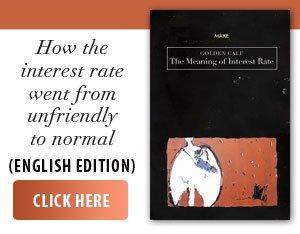
Global debt rose in Q3 2023, after a slight decline in the previous quarter, as funding costs continued to rise, to $307.4 trillion, according to the latest Global Debt Monitor (GDM) report from the Institute of International Finance (IIF).
The $1.2 trillion advance from the previous quarter, after a $0.8 trillion decrease in Q2 2023 and an increase of $9.2 trillion in Q1 2023, was driven by a $1.4 trillion increase in debt from the level of emerging economies and the decrease by 0.2 trillion dollars of debts from the level of developed economies.
In the first nine months of 2023, the cumulative increase in global debt was $9.6 trillion, after a cumulative decrease of $15.6 trillion in the same period last year.
The global debt burden, expressed by relating it to the global Gross Domestic Product, recorded a quarterly decrease of 0.5 percentage points and reached 333.1%, 4.2 percentage points below the level of the same period last year (see graph 1).

The marginal decline in the global debt burden took place against the background of an increase in nominal global GDP to a new record of 92.3 trillion dollars, driven mainly by rising prices, amid moderate economic growth in real terms.
The debt burden at the level of emerging economies registered a new record, of 255.6% of GDP, after an increase of 7.5 percentage points compared to the same period last year. Data from the IIF show the largest increases in debt burdens for Russia, China, Malaysia and Saudi Arabia, while the decline in debt burdens across advanced economies took place amid a moderation in debt growth of non-financial companies and households.
As a percentage of GDP, total debt in advanced economies fell to 379.4% in Q3 2023, from 381.3% in the previous quarter, 11.2 percentage points lower than in Q3 2022.
"We anticipate that the ratio between global debt and GDP will resume its upward trend, as the pace of global growth remains weak and inflationary pressures continue to ease," the IIF report also states.
Total debt at the level of emerging economies registered a quarterly increase of 1.36 trillion dollars, to 101.34 trillion, while the total debt at the level of developed economies decreased by about 0.19 trillion dollars, to 206 trillions of dollars (see chart 2).

At the level of developed economies, the largest increases in debt were recorded in the United States, Japan, France and Great Britain, and at the level of emerging economies, the largest increases were in China, India, Brazil and Mexico.
After distribution by sector, the debts of households stagnated at about 57.9 trillion dollars, and the debts of non-financial companies increased by 0.1 trillion compared to the previous quarter, up to 91.1 trillion dollars.
Government debt increased by $0.9 trillion in Q3 2023 from the previous quarter to $88.1 trillion (97% of global GDP), and financial company debt increased by $0.2 trillion to to 70.3 trillion (79.5% of global GDP).
Government debt from developed economies increased by 0.2 trillion compared to the previous quarter, up to 61.1 trillion dollars, respectively 114.2% of GDP, and government debt from emerging economies increased by 0.6 trillion dollars, up to 27 trillion, respectively 68.2% of GDP. According to the IIF forecast, global debt will reach $310 trillion by the end of the year.
"If next year's elections will lead to the emergence of populist policies aimed at controlling social tensions, the result could be an even higher level of government borrowing, amid reduced fiscal discipline," the IIF analysts warn, recalling the particularly busy electoral calendar in 2024, with elections in over 50 countries and regions.
With budget deficits well above pre-pandemic levels in many major economies, IIF economists estimate that global government debt could see annual increases of $5.3 trillion between 2024 and 2027, putting pressure on increasing at the level of budgetary expenses with interests.
"Many countries, especially Egypt, India, Malaysia, Pakistan, South Africa, Turkey and the USA, are already allocating an increasing share of their income to interest expenses," the IIF report also states, and "a sudden increase of government spending during this global election cycle could further increase the interest burden on many sovereign borrowers."
Another warning from the IIF refers to the increase of vulnerabilities in certain economic sectors, against the background of the high degree of indebtedness, in the new context of growth and maintenance of interest rates at a high level.
Among the examples provided are "increasing consumer debt vulnerabilities among young people in the US," but also "increasing vulnerabilities among firms with low credit ratings, particularly in Europe."
The report from the IIF also points out that the borrowing appetite of companies is at its lowest in recent years, against the background of the restriction of financing conditions, and this trend, together with the "accentuated geo-economic fragmentation", results in increasing threats to the financing prospects of projects destined combating climate change.
The nominal value of debts from emerging economies that will mature by the end of this year, bonds and credits, is about 1.5 trillion dollars, and next year there will be maturities of about 7 trillion dollars. The largest part, about 6 trillion, is represented by debts in national currencies.
For developed economies, the amount of debt maturing by the end of this year is about $9 trillion, followed by more than $18 trillion maturing in 2024, according to data from the Institute of International Finance.




























































